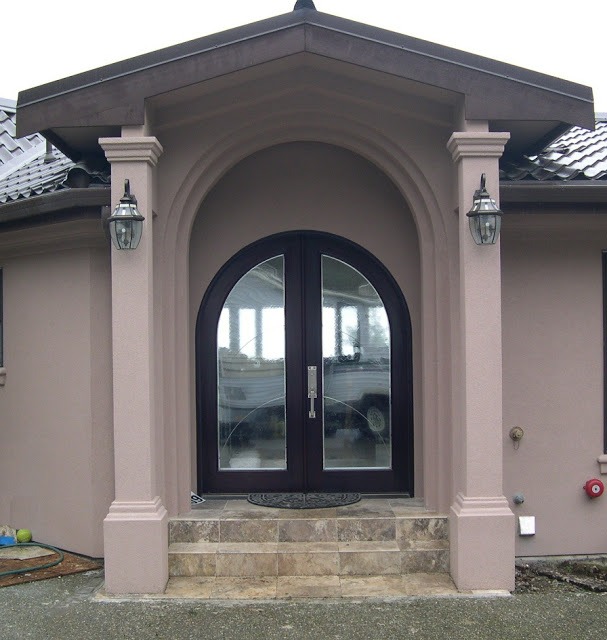How to Make Your Home’s Exterior Brick Wall Leak Resistant During A Home Remodel
It’s going to be impossible in this limited space to provide the step-by-step process to create leak proof brick window and door sills when doing a home remodel. One could easily write a book about the topic. But i’ll give plenty of information so you have a crystal-clear understanding of what’s involved.
Let’s start by discussing the water resistance of brick buildings. I find that people tend to believe brick structures are waterproof. The truth is that water enters into brick walls with relative ease. In your case, with the holes in the mortar, it’s quite obvious water will pour into the cavity behind the brick.
Many modern brick homes and some commercial buildings are built with a brick veneer. This means that brick is just one wythe thick. The brick is just a facade and offers no structural support whatsoever. Older brick homes and multifamily structures you might find in just about any older city or town were often two, or even three, wythes thick. These thicker walls were not only structural; they also were designed to be highly water resistant.
While the brick itself is very resistant to water passing through it, and to a degree the mortar between the brick, the interface where the mortar touches up against the brick wall. You can’t see this crack because it’s often very small, but it exists.
Years ago, builders and brick masons observed what was happening and they used different brick in an exterior wall to help stop water from getting inside the structure. The brick that you’d see on the outside of the building was harder and denser than the brick hidden inside the walls. This softer brick acted like a sponge to absorb water during a rainstorm. After the storm passed, the water would be sucked from the inner brick by wind and sunlight that washed over the exterior brick facing.
Brick veneer buildings lack this soft inner brick and the water can flow down the back of the single-layer of brick. If the structural wood-frame walls are not covered with a water-proof membrane, or this membrane has a leak in it, then water can get into the wall. This can cause wood rot, mold, mildew and bubbling paint, as you know all about.
The best practices published by the Brick Industry Association call for flashings under window and door sills. These flashings collect the water that leaks through the mortar joints and redirects it to the outside of the wall.
Base flashings are also required under the first course of brick as well as at other locations on brick veneer to ensure that wet mortar falling behind the brick doesn’t block the flashings and any weep holes at the base of the brick walls. These weep holes are installed on purpose and allow the water to flow out of the wall. It requires a significant amount of skill and attention to detail to do all the things needed to ensure a brick veneer wall does not leak.
I would not caulk the holes. I’d fill the holes with mortar that matches what you have. To match mortar, you need to get sand that matches the sand that the original bricklayer used. Look closely at the mortar joints, paying attention to the size and color of the individual grains of sand. When you mix up the new mortar, the cement paste in the mortar mix will coat all the sand, making the color of the mortar all the same shade.
Over time, natural weathering washes away the thin mortar film, revealing the sand. If you wait 30 days you can do a mild acid wash of the new mortar patches so you see the sand without having to wait decades. Apply the acid/water solution carefully to just the new mortar using a small brush. You’ll see the acid start to bubble as it reacts with the alkaline mortar paste. Rinse well with clear water.
If you ever build a brick veneer home again, you can help minimize water leaking into the wall cavity by using the same mortar masons used well over 100 years ago. Modern mortars have a high Portland cement and much more hydrated lime.
Hydrated lime is a magical ingredient because if a tiny crack develops after the brick is installed, water reacting with the lime causes new microscopic crystals to grow, filling the crack in many cases. I urge you find a mason that’s familiar with hydrated lime mortars and your dream of a perfect home remodel in Everett will be fulfilled.



